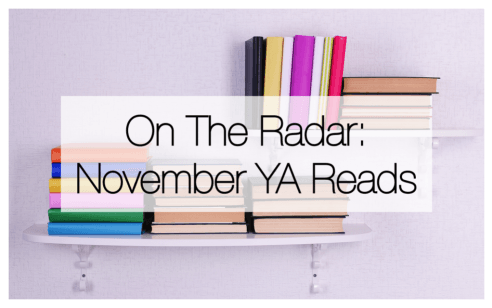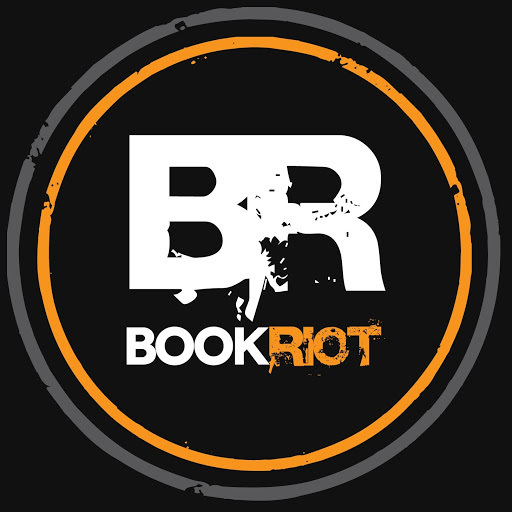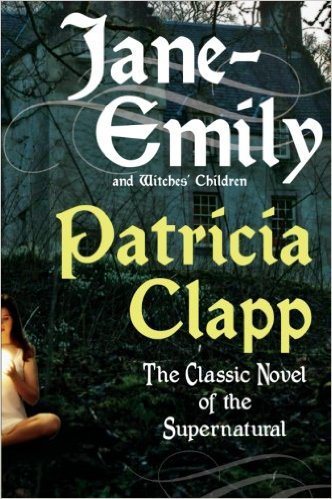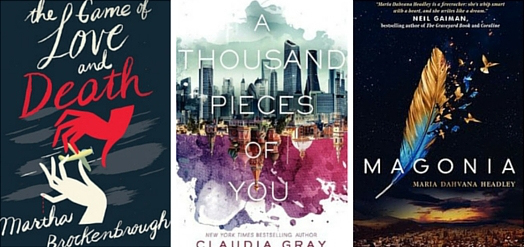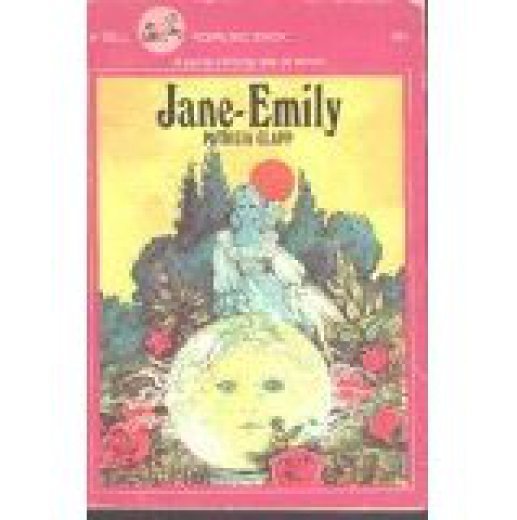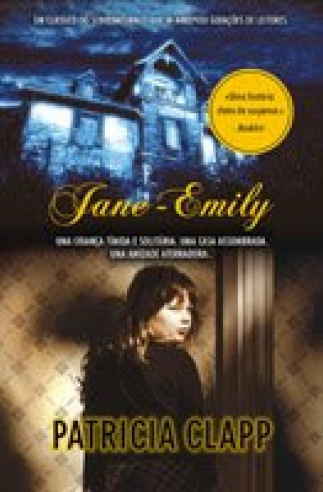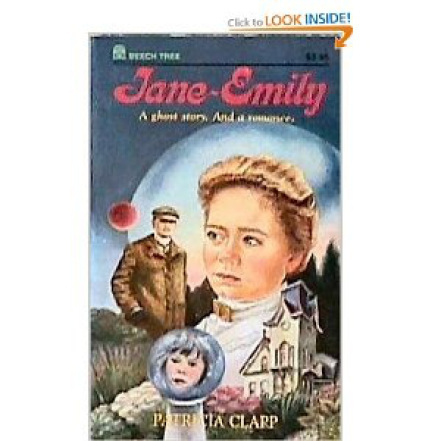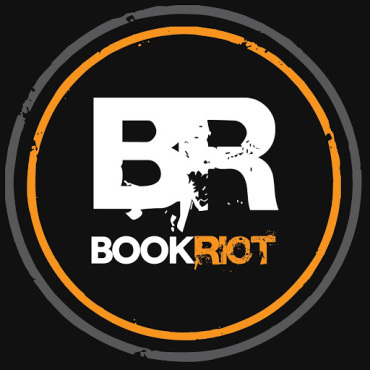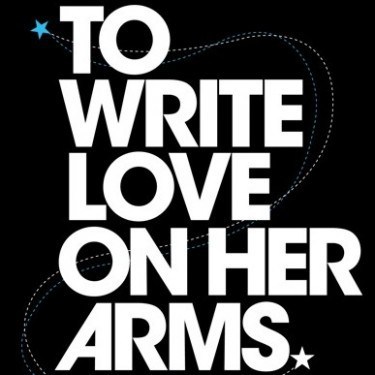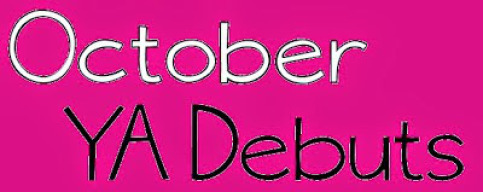Kelly Jensen's Blog, page 75
November 1, 2015
On The Radar: 9 YA Books for November
One of the most popular posts I do over at Book Riot is the round-up of upcoming YA fiction titles, and one of the most popular questions I seem to get on Twitter and in my inboxes is “what should I be looking out for in YA?” For a lot of readers, especially those who work with teens either in classrooms or in libraries, knowing what’s coming out ahead of time is valuable to get those books into readers’ hands before they even ask.Each month, I’ll call out between 8 and 12 books coming out that should be on your radar. These include books by high-demand, well-known authors, as well as some up-and-coming and debut authors. They’ll be across a variety of genres, including diverse titles and writers. Not all of the books will be ones that Kimberly or I have read, nor will all of them be titles that we’re going to read and review. Rather, these are books that readers will be looking for and that have popped up regularly on social media, in advertising, in book mail, and so forth. It’s part science and part arbitrary and a way to keep the answer to “what should I know about for this month?” quick, easy, and under $300 (doable for smaller library budgets especially).
For November, here are 9 titles to have on your radar. All descriptions are from WorldCat, and I’ve noted why it should be included. Most of those reasons this time, it turns out, are “because of the author.”
All In by Jennifer Lynn Barnes: Cassie and the other members of the Naturals program of the FBI are drawn into a murder investigation in Vegas
Why: This is the third in Barnes’s “Naturals” mystery/thriller series.
Game of Lives by James Dashner: The VirtNet has become a world of deadly consequences, and Kaine grows stronger by the day. If Kaine succeeds, it will mean worldwide cyber domination. And it looks like Michael and his friends are the only ones who can put the monster back in the box–if Michael can figure out who his friends really are.
Why: This is the sequel to Dashner’s The Rule of Thoughts.
Hotel Ruby by Suzanne Young: On the way to spend a summer with her grandmother after the sudden death of her mother, seventeen-year-old Audrey, her older brother Daniel, and their father happen upon the Hotel Ruby, a luxurious place filled with unusual guests and little chance of ever leaving.
Why: Young’s writing is so teen friendly, with great, authentic dialog. This is a stand alone, too.
Manners & Mutiny by Gail Carriger: In an alternate England of 1851, Sophronia Temminnick is the only hope for her friends, her school, and all of London when she must put her espionage training to the test to thwart an evil Picklemen plot.
Why: This is the fourth book in Carriger’s steampunk series.
Soundless by Richelle Mead: A fantasy adventure steeped in Chinese folklore about a teenage girl named Fei. When her village is suddenly in danger, Fei finds herself on a journey from the peak of her jagged mountain village to the valley of Beiguo, where a startling truth and an unlikely romance will change her life foreve
Why: Richelle Mead, of Vampire Academy is the author of this stand-alone fantasy.
Ten Thousand Skies Above You by Claudia Gray: As eighteen-year-old Marguerite struggles to get to the heart of the corrupt company that almost killed her father, she tries to save the boy she loves, whose soul is scattered in various dimensions.
Why: This is the second book in this space/time/fantasy adventure from Claudia Gray. I don’t think it’s exaggerating to say that this particular series has gotten one of the best cover treatments in memory.
This Way Home by Wes Moore with Shawn Goodman: Elijah, seventeen, has always been sure of just one thing–basketball–and believes it will be his way out of West Baltimore, but when gang violence knocks him down, helping a veteran repair his rickety home helps Elijah see what really matters.
Why: Wes Moore, who wrote the memoir The Other Wes Moore, has his first novel coming out. The memoir was one we named to the Outstanding Books for the College Bound, and I believe there’s also a young reader’s edition.
Traffick by Ellen Hopkins: Five teenagers struggle to find their way out of prostitution.
Why: WorldCat keeps it to the point with their description, but besides this being an Ellen Hopkins book, it’s the sequel to Tricks.
Winter by Marissa Meyer: Princess Winter, admired by the Lunar people for her grace and kindness, teams up with the cyborg mechanic, Cinder, and her allies, to defeat Queen Levana and find their happily ever afters.
Why: It’s the fourth and final installment in the wildly popular “Cinder” series. I believe this might be one of the most anticipated books of the year . . . as well as one of the longest. It weighs in at 800+ pages.







 Related StoriesCovering JANE-EMILY: A Look at DesignOn The Radar: 12 Books for OctoberGuess The YA Book By Its Subject Headings
Related StoriesCovering JANE-EMILY: A Look at DesignOn The Radar: 12 Books for OctoberGuess The YA Book By Its Subject Headings
October 31, 2015
Giveaway: A 2015 Feminist Bookshelf
It’s the time of the year that I both love and loathe: “best of” lists. While I love seeing what books different journals consider the best of the best, I hate knowing that those lists tend to overlook certain types of books. We will absolutely see feminist books on best of lists this year, but they’re not going to be the unabashed girl story type feminist books. Girl voices aren’t seen or praised in the same way that others are. I’ve already been bummed to see one of the best decorated, beautiful books this year go unrecognized on more than one list, and I can’t help but point to the fact it’s because it’s a very female-driven story.
I can’t change things, but one thing I can do is celebrate female-driven, feminist stories. And one way I can do that is by offering up a big giveaway of some of the best girl stories out this year.
I’m giving away 9 — yes NINE — YA novels that came out in 2015 that feature female-driven narratives and focus on girl stories. These books range from dark realism to lighter romances to fantasies and more. Here’s what’s up for grabs:
I’ll draw a winner at the end of November to win this feminist starter set. It’ll be perfect for you or perfect to give to the budding feminist in your life (or to stock your library/classroom bookshelves). US only, simply because shipping elsewhere is really expensive.
All you need to do to enter is fill out this entry form. I want to know your favorite female-driven YA novel, too, past or present. I’ll do a big round-up in December so we can highlight the amazing girl stories out there.
Loading…







 Related StoriesGiveaway: From Where I Watch You by Shannon Grogan
Related StoriesGiveaway: From Where I Watch You by Shannon Grogan
October 29, 2015
This Week at Book Riot
Over at Book Riot this week…
“Rules” of reading that you can and should totally break
I highlighted three funny YA books in this week’s “3 on a YA Theme”







 Related StoriesThis Week at Book Riot & TWLOHAThis Week at Book Riot
Related StoriesThis Week at Book Riot & TWLOHAThis Week at Book Riot
October 28, 2015
JANE-EMILY by Patricia Clapp
I went into Jane-Emily not knowing what to expect. In part because the descriptions for this book are all over the map and none of them really get to the heart of what the book’s about. The other reason I didn’t know what to expect was that I am never quite sure how older horror in YA holds up. I knew that a book that was reissued decades after it came out meant that there was something to it, but I had no idea if it would fall into the genuinely creepy camp or would be more in the silly camp.
This falls squarely in the “holds up and is totally creepy” camp.
Liz has been sharing her chapter by chapter thoughts on this one. Go read them. She’s picked up on a number of things that I thought about as I was reading.
Rather than talk about what did and didn’t work in this book — for me, it was an all around winner in terms of working — what really captured my attention with this one was how it was framed and structured and whether or not a book like this would be considered YA today.
Louisa is our narrator, or at least, she’s the primary voice we hear through the story. She’s 18, and she’s been dating a boy for quite a while before she and her cousin Jane go spend a summer at Jane’s grandmother’s home. Understand that Jane has experienced a lot of loss and trauma in her life; this summer is meant to give her the opportunity to be a kid and enjoy her summer. Louisa agrees to go, even though she’s a bit more reluctant. She also reluctantly agrees to send and receive letters with her boyfriend who is far more attached to her than she is to him.
This seems to be Louisa’s thing, being somewhat distant.
The bulk of the story, though, focuses on Jane, who begins to see and experience strange sensations that she knows belong to the spirit of Emily. Emily was her grandmother’s daughter, and she was, as grandma and everyone else in the house continues to say, “a not good kid.” Emily “resides” in a mirror ball, and her spirit continues to reach out to little Jane. It’s creepy in an atmospheric, Shirley Jackson type way — it’s far more about what you don’t see than what you do see. It’s clear that Emily is haunting Jane, though I frequently wondered how much of that was a true spirit haunting her vs how much was Jane’s own trauma coming to haunt her. I think the fact you don’t ever REALLY know is the part that’s most chilling.
But back to Louisa. For being the main voice, we actually never get to know her, aside from the fact that she’s got this boyfriend who she seems distant from, and she’s been set up by her great aunt to meet a local doctor for potential dating purposes. Louisa’s not impressed with the doctor at first, but slowly, he begins winning her over, even though he speaks less-than-flatteringly of women. This book was set in the early 1900s, so pre-suffrage, but there’s little to no pushback on the doctor’s mentality by Louisa. I don’t think it’s because Louisa doesn’t have an opinion; rather, I think it’s because Louisa isn’t interested in telling her own story at all. She’s instead the vessel for Jane/Emily’s story.
This construction fascinates me. Being that Louisa is the teenager here and Jane is a mere 9 years old, it’s a little strange that this book is and was marketed for teenagers. The teenager in the story (the only teenager in the story!) is Louisa, but her story doesn’t matter at all. Rather, this is about the 9 year old, and this is the kind of book that would go over well with middle grade readers. Mary Hahn Downing fans would find a lot of good here.
I think this book would also do well with adult audiences in many ways. Ignoring the nostalgia factor, which is certainly important with this particular book and its potential audience, a lot of the way the book is written has appeal to adult readers who want a chilling story. There’s distance between subject and story, and there is a lot to dig up in terms of what was going on at this historical moment. Again, Liz has done a fabulous job pulling out the questions she’s had as an adult reader, including how old the characters were when big historical events were going on, as well as what was and wasn’t in fashion during this period. The ripeness this book has for that sort of unpacking leads me to think about how appealing it would be for adults; look at books like The Book Thief and The Curious Incident of the Dog in the Nighttime. In different parts of the world, they were treated very differently and for different audiences than in the US.
It’s odd to think of a book being marketed as being for teens doing better or being more suited as a middle grade OR an adult novel, but I do think middle grade and adult fiction have some interesting parallels to them. This isn’t the first time I’ve thought this, but it’s the first time I’ve sat to digest the importance of voice and framing when it comes to where and how a book fits with an audience. Of course, we know “YA” is a marketing tool, rather than a necessary “type” of book, but this book, being one that was indeed intended for teens, seems to allow room for really thinking about what it is that makes a book for teens or not. Jane Emily isn’t interested in the teen’s story at all. But would moving it outside of Louisa’s perspective change it? Would it be as chilling? Would we be able to figure out what’s going on if it were from Jane’s perspective?
All of that isn’t to say teens won’t enjoy this. They will, but I think this book will tick off all the boxes for that 9-12 readership that’s ready for a YA-type book but do not necessarily want YA. It’s told through an older voice, which is immediately appealing, though the story itself is about the experiences of a 9-year-old. It’s creepy in an atmospheric way, so while it could definitely cause nightmares for more faint of heart readers, the primary take away isn’t in Emily’s ghostly (…or not ghostly!) character. It’s far bigger in terms of grief, loss, and trauma.
Another really interesting note on this book: it’s short. The entire story takes place in roughly 140 pages, and it doesn’t take shortcuts in developing story in them. Sure, we don’t get to know much about Louisa or her love life, but Louisa is built as a distant character from the start. We accept the lack of details to be part of how she takes in her world and how she wants to present the story to us. Susan Hill does this same thing, building atmosphere, character, and story, in about the same number of pages in her classic The Woman in Black, too. Which again: my comps for this title fall right into the middle grade *and* adult arenas. Would fans of teen scream queen Lois Duncan like this? Absolutely. But I also think Duncan has great appeal for that 9-12 age range (that’s when I was reading her, for sure).
It’s interesting to think about this book, how well it went over, how it came back into print, and how it lacks the page counts of today’s books. Does brevity help its longevity? Because it doesn’t dwell on details — and it is set in the past — does that help in its timeless feel? Do the holes in the details make it appealing to adults who will want to fill them in with their own historical knowledge?
Jane Emily was such a great read, and I recommend it, if for no other reason than the number of question it left me with in terms of audience, readership, structure, voice, and more. In a lot of ways, its succinctness left those doorways open in a way that a longer, larger, meatier book sometimes closes. And for me as a reader (and as a horror movie lover), the true chills aren’t in the things we see, but in the things that go unsaid and in the questions that stick around for a long, long time.







 Related StoriesA Few Cybils Reads – Part II (2015)Recently Read: ONE by Sarah Crossan and SEE NO COLOR by Shannon GibneyCovering JANE-EMILY: A Look at Design
Related StoriesA Few Cybils Reads – Part II (2015)Recently Read: ONE by Sarah Crossan and SEE NO COLOR by Shannon GibneyCovering JANE-EMILY: A Look at Design
October 27, 2015
A Few Cybils Reads – Part II (2015)
The Game of Love and Death by Martha Brockenbrough
It’s 1930s America, and Love and Death are playing a game. They each have chosen a player: Love has Henry, a white boy whose parents have died, leaving him in the care of a family who considers him not-quite-a-son; Death has Flora, a black girl who dreams of flying her own airplane across the ocean and sings jazz in a nightclub she partly owns. The rules of the game aren’t quite clear initially, but as readers we do know that these two teenagers will fall in love, and the implication is that their love will be rocky and affect Love and Death – and perhaps the world – in uncertain ways. This is a slow-moving and contemplative story, one that takes a considerable investment of time to appreciate. At first I found it difficult to connect with the story and its characters, which I think is deliberate. The narration is third-person omniscient (mainly), which can often lead to that kind of feel. Some portions are told from the perspective of Love and Death, and they’re both inscrutable entities, though they become a bit clearer as the story goes on. This kind of narration brings inevitable comparisons to The Book Thief, though the two didn’t seem very similar to me. By the time I got over halfway through, though, I felt like I knew the characters on a really deep level – and I felt like I knew Love and Death, too, despite their strangeness. This is a unique sort of book that should appeal to fans of historical fiction and those seeking something different.
A Thousand Pieces of You by Claudia Gray
This is a story about parallel worlds, which is one of my plot kryptonites. Marguerite’s parents are scientists who have been researching the possibility of travel to parallel worlds, and just as it seemed they had finally figured it out, one of their research assistants – Paul – kills Marguerite’s father and steals all of his research, running away to one of these parallel worlds. Marguerite teams up with another research assistant, Theo, and they go after him. Of course, all is not as it seems, and Marguerite begins to suspect that Paul was framed – but by whom, and for what reason? Fleshing out this mystery is a really fun series of adventures. Marguerite and Theo first travel to a world where technology has advanced at a much faster rate, so we get to see what a potential future would be like. Then they find themselves in Russia in a world where neither the Russian Revolution nor the Industrial Revolution happened – though both might be on the cusp of happening, putting Marguerite in exceptional danger. It’s tons of fun to see all of these possibilities play out, like the best combination of a parallel worlds and alternate history story. There’s a love triangle that adds a lot of appeal, and the question of who really killed Marguerite’s father and why propels the story forward. Exciting and well-written.
Magonia by Maria Dahvana Headley
Aza Ray Boyle has always been sickly. Since she was a small child, she’s had trouble breathing, and it’s sent her to the hospital many times. She wasn’t expected to live to see her 16th birthday, which is right around the corner. She’s been hearing something calling her name lately, and then something crazy happens with a bird, and Aza dies – maybe. She actually wakes up on a ship in the sky, surrounded by strange bird-people, though her body is being buried on the earth below. It turns out Aza is actually one of these bird-people, kidnapped at a young age, and her mother – a bird person as well – has finally found her and brought her “home.” This is one of the weirder books I’ve read. You’ve really got to buy into the concept of a race of bird-people living up in the sky unbeknownst to all the humans below, plus believe the explanation for how Aza’s body was buried but she isn’t really dead. The narration (I listened to this one on audio) is excellent, infused with all the panic and disbelief that Aza feels when she finds herself in a sky ship. Aza’s voice overall is pretty good, actually, and starts the book off really strong – she’s snarky about her illness and how people treat her because of it, and there’s a lot of dark humor in the early parts. Personally, I never fully connected with the bird-people living in the sky plotline, but I’m sure it’s just the right kind of weird for another reader.







 Related StoriesA Few Cybils Reads – Part I (2015)Recently Read: ONE by Sarah Crossan and SEE NO COLOR by Shannon GibneySkip This Book: Future Perfect by Jen Larsen
Related StoriesA Few Cybils Reads – Part I (2015)Recently Read: ONE by Sarah Crossan and SEE NO COLOR by Shannon GibneySkip This Book: Future Perfect by Jen Larsen
Exciting News & A Pep Talk To Readers
In between tackling some challenging social media related shenanigans, I’ve been working really hard lately on my anthology, as well as some other writing for work and non-work reasons. It’s been fabulous, all of this writing, as has been the incredible honor I’ve had to edit essays for Feminism for the Real World. I’m going to have a very exciting announcement soon with the second part of my contributors (!!) but in the time before that, I have my own exciting announcement which is this: I am now represented by literary agent of wonder, Tina Wexler at ICM.
I cannot express my excitement for how well Tina and I clicked from our first email to our phone calls. I have let her in on all of my secrets and it’s really neat to have someone who not only gets it, but who is excited about helping me find a home for the projects I’ve got in my pocket. I even shared some (gasp!) YA fiction I’ve toyed with, a project I have toyed with and put away because of more pressing work, and she was receptive and excited by it.
A little back story: I’ve done this entirely backwards, upside down, and in my own way on my own terms. Most writers begin with an idea, then they write the manuscript, then they query agents, then they work with the agent who sends their work off to editors who might be interested. I jumped around. I wrote and sold a book to VOYA entirely on my own, and I did the same with Feminism for the Real World with Algonquin Young Readers. One of my editors there suggested I think about agents while going through some of the paperwork aspect of the project, and her suggestion really made me sit back and think about what I wanted for a career out of writing — and it was and is clear to me there’s more than this in me. Suddenly, I had five million ideas and wanted to find an agent who’d be open to trying these things, as unconventional as they may be.
There’s little to nothing out there for writers who aren’t going into straight fiction or even narrative non-fiction in terms of what they should be doing to find an agent. So I asked around — I asked writers I knew who loved their agents why they loved them, what made them stand out, and whether they knew anyone else who might be open to talking. I had it in my head to just talk, and I had fantastic conversations with two great agents. After talking, I knew this was something I not only wanted to do, but that I needed to do.
I have been taking an online course about dreaming for the last four weeks. I did it for me and me alone, and it’s been about an hour a day I get to spend thinking about possibilities and ideas and making my life more creatively adventurous and fulfilling. I might write about the course in more detail when it’s done, but a few of the big takeaways from it so far have been really impacting my thinking. I can’t just sit on ideas. I have to let myself pursue them as I have them or at least write them down to pursue when I’m ready. In a lot of ways, this was “divine timing.” And this was a leap and a risk I was more than ready to take.
I’m thrilled to keep writing, to keep building this unconventional and exciting and fun and fulfilling career. Last weekend marked four years since I walked out of a job that left me depressed and miserable and feeling awful day in and day out. I had no plans when I left, just that for my own sake, I needed to get out.
Four years back, I couldn’t have envisioned how much that decision radically changed my life in the best possible ways.
If you’re reading this, take that leap. You and your life are worth it. There will be super crummy times. There will be things that truly test the limits of all aspects of your life and your relationships.
But you only get to do this whole thing once, so take the chances as you can.
“Yes” is just as important as “no.”







 Related StoriesMaintaining Privacy and Safety Online: Tips & Tools To UseDiversity in 2016 YA Book Covers So Far“Kelly, how about an update?”: On the 30-Day Shred, 3 Years Later
Related StoriesMaintaining Privacy and Safety Online: Tips & Tools To UseDiversity in 2016 YA Book Covers So Far“Kelly, how about an update?”: On the 30-Day Shred, 3 Years Later
October 26, 2015
Parallel Worlds Redux
A few years ago, I did a brief roundup of YA novels featuring parallel worlds. Since then, the trend seems to have gained a bit of steam, so I figured it was time for an update. I deliberately excluded books that focused on alternate histories unless they also included parallel worlds (the overlap is rather common), otherwise the list would be entirely too long. All descriptions are via Worldcat. What others are out there?
Trial by Fire by Josephine Angelini
In her hometown of Salem Lily Proctor endures not only life-threatening allergies but humiliation at her first high school party with her best friend and longtime crush, Tristan. But in a different Salem — one overrun with horrifying creatures and ruled by powerful women called Crucibles, she is Lillian, the strongest and cruelest Crucible … Lily’s other self in an alternate universe that Lily suddenly finds herself where she is torn between responsibilities she can’t hope to shoulder alone and a love she never expected. | Sequel: Firewalker | Kimberly’s review
Relativity by Cristin Bishara
If Ruby Wright could have her way, her dad would never have met and married her stepmother Willow, her best friend George would be more than a friend, and her mom would still be alive. Then she discovers a tree in the middle of an Ohio cornfield with a wormhole to nine alternative realities. But is there such a thing as a perfect world? What is Ruby willing to give up to find out?
A Thousand Pieces of You by Claudia Gray
When eighteen-year-old Marguerite Caine’s father is killed, she must leap into different dimensions and versions of herself to catch her father’s killer and avenge his murder. | Sequel: Ten Thousand Skies Above You
Tandem by Anna Jarzab
Sasha, who lives a quiet life with her grandfather in Chicago but dreams of adventure, is thrilled to be asked to prom by her long-time crush, Grant, but after the dance he abducts her to a parallel universe to impersonate a princess. | Sequel: Tether
3:59 by Gretchen McNeil
Betrayed by the two persons she trusts the most, Josie jumps at the chance to trade places with her twin in a parallel universe until Josie becomes trapped in a dangerous world where shadowy creatures feed on human flesh.
Parallel by Lauren Miller
A collision of parallel universes leaves 18-year-old Abby Barnes living in a new version of her life every day, and she must race to control her destiny without losing the future she planned and the boy she loves.
Now That You’re Here by Amy K. Nichols
When street smart graffiti artist, Danny, is jolted into a parallel world, only Eevee, an alluring science geek has the know-how to get him home, but as he falls for her, his motives grow foggy. | Sequel: While You Were Gone
Dissonance by Erica O’Rourke
Every time someone makes a choice, a new, parallel world is spun off the existing one and Del’s job is to keep the dimensions in harmony. | Sequel: Resonance | Kimberly’s review
Just Like Fate by Cat Patrick and Suzanne Young
Torn between an emotionally wrenching vigil by her grandmother’s deathbed and attending a party with her best friend, Caroline experiences two parallel lives that reflect the outcomes of each choice, only one of which leads to a happy ending.
Pivot Point by Kasie West
Addison Coleman’s life is one big “What if?” As a Searcher, whenever Addie is faced with a choice, she can look into the future and see both outcomes. It’s the ultimate insurance plan against disaster. Or so she thought. When Addie’s parents ambush her with the news of their divorce, she has to pick who she wants to live with – her father, who is leaving the paranormal compound to live among the “Norms,” or her mother, who is staying in the life Addie has always known. | Sequel: Split Second







 Related StoriesOctober Debut YA NovelsInterracial Romance In (and on) YA Books: A Guest Post from Libertad Araceli ThomasCovering JANE-EMILY: A Look at Design
Related StoriesOctober Debut YA NovelsInterracial Romance In (and on) YA Books: A Guest Post from Libertad Araceli ThomasCovering JANE-EMILY: A Look at Design
October 25, 2015
Covering JANE-EMILY: A Look at Design
This week, both of my posts will be about Patricia Clapp’s classic Jane Emily, as I’m taking part in a read and blog along with Leila Roy and Liz Burns.
It’s been a while since I’ve done a YA book cover retrospective, wherein I pull up as many of the old covers of a book as possible and look at the ways it’s evolved and what/where it might fit into the book’s story. Jane Emily was originally published in 1969, to see a few cover evolutions over the course of its early life. When it was brought back into print in 2007 by Harper, it took on another cover that, despite being new, still harkened back to the original look.
I’ve tried to pull as much information as possible about these covers, but there may be places where it’s missing or unavailable. Anyone who knows more or knows of other cover variations — foreign covers, especially — feel free to let me know. I’d also love to know what you think about these covers, whether or not you’ve read the book. I’m purposefully talking about the covers before the content because, as we know, covers are what “sell” a book. Is a novel from 1969 still able to be sold to today’s teen readers?
You might be surprised.
Original 1969 Cover
The original cover for Jane Emily is quite simple and offers surprisingly little into what the story may be about. The girl on the cover appears to be a teenager, and behind her, there’s a younger girl looking into a wishing ball. The use of flowers here is representative of something in the book, though as they’re rendered here, they don’t make a whole lot of sense to the cover. The house, of course, does play a role in the story.
Design wise, this is dated, but it’s interesting to note that it does contain representations of all the key pieces of the story. Though the fact it’s focused heavily on the older girl — Louisa — seems misrepresentative of what the story’s truly about. This is something I’ll hit on in talking more in depth about the book, but the primary focus is on Jane, who you see looking through the wishing ball in the background.
Looking at this cover wouldn’t suggest it’s a horror read. It looks a little bit like it’s the kind of story a reader who loves Anne of Green Gables might want to pick up. Sure, Louisa has a romance in it and sure, there are moments of sweetness, but the feel of the book is atmospheric and haunting and creepy.
1971 Paperback
There is nothing I do not love about the 1971 Dell paperback edition of Jane Emily. This is a cover that screams horror, that embodies atmosphere, and it puts Jane/Emily in the center of the story. There’s also a really great pull quote from the Booklist review to hammer home to readers that this is a scary read.
It’s interesting to look at the way the house is depicted here, as opposed to how it’s depicted in the hardcover above. In this one, it’s clearly Gothic and sinister. In the hardcover, the house looks like the White House — it’s stately, clean, and not menacing, but elegant. This paperback cover doesn’t have a whiff of romance to it, either.
The look of horror and shock on the girl’s face is so fantastic. This cover would have absolutely sold me on the book when I was a teen reader (or honestly, a middle grade reader wanting to “read up”) and it’d be the kind of book that I’d have scooped up if I saw it in a used book store.
1974 Paperback
The quality of this cover image is bad, but it’s the best one I could find in my searching. From 1974, we take the look in a direction that tries to marry the romantic vibes of the original hardcover with the most sinister feel of the paperback. But this particular cover doesn’t offer a feeling of either one. It’s a weird shade of bubblegum pink, with a young girl who seems to have oddly blue-green skin looking into the mirror ball. There are still flowers here,but they’re roses (which isn’t the flower in the book that matters). And rather than a house in the background, we have a forest, along with a glowing orange orb that could be either a sun or a moon. It’s hard to say, seeing the sky is an odd shade of yellow.
Without question, this cover tries to appeal to female readers. But it also doesn’t do the story justice. You know there’s something odd going on with the mirror ball, but it looks more like a Wizard of Oz type tale than it does a horror read.
I snagged this cover image from a really fascinating post about the book from Kelly R. Fineman from 2008 on Livejournal. I love how she talks about rereading this one and how much she remembers the experiences of reading it.
Portuguese Edition
Again, another poor quality image because the same one appears to be used over and over throughout the internet. This particular cover is of the Portuguese edition of Jane Emily. I’ve been unable to come up with a year for this one, as I’ve seen some sites suggest it came out at the same time as the hardcover, but I also found a glut of sites sharing reviews and discussions of this one from 2009.
The cover for this foreign edition is pretty great. It looks a lot like a horror film poster, and it’s effective in telling the reader this is about a younger girl and a house that isn’t all that it seems to be. This is a stripped down look from the others, too, as we don’t see a lot of the elements that make up the story shown. There’s not a mirror ball, nor is there a garden or flowers. Again, the focal point is on Jane, the younger girl, rather than Louisa, the teen in the story.
In a lot of ways, this cover looks like it’s aimed at an adult audience more than anything. It looks mature and complex even in its simplicity.
The font for the title reminds me a lot of Jane Eyre here. I can’t place my finger on why, other than the names looking similar. Perhaps I’ve seen an edition of the Bronte classic with this sort of font treatment.
1993 Beech Tree Books Paperback
If a cover could encompass the 1990s teen paperback aesthetic, this is it. It’s filled with clashing covers, weird illustrations, and it’s smashed together in a collage that indeed includes everything from the book. Where to begin?
First, we have Jane at the center. Kind of. But it’s not really Jane — it’s Emily through the mirror ball. Of course, unless you’ve read the book, you wouldn’t know that. Then there’s Louisa, who takes the big image in the middle of the page. She’s very “buttoned up” here, which I didn’t get the sense of from the book being her look or style. Behind her is the doctor (I believe!) that she begins to see romantically while at her aunt’s home. But that’s not a given; it could be her boyfriend from back home, Marcus. I’m betting though it’s the doctor by appearance alone.
Also included on the cover are the house, which looks more stately than ominous,as well as the flowers and garden that play a role in the story. Then there’s another weird bubble going on in the background, too. I’m not entirely sure the role of that, but I guess they needed to use something to fill the space on the cover since nothing else would bring it all together quite the same way.
The tag line for this, though, is the clincher for me: “A ghost story. And a romance.”
That makes it sound like it’s a possible romance with a ghost, doesn’t it? And yes, there is romance in here, but it’s hardly a big deal in the story and it’s not what a reader will pick this one up for. If they do, they’re going to be pretty surprised about how that all plays out.
2007 Harper Paperback Reissue
Taking bits from the Dell paperback is the Harper rerelease from 2007. I love this cover — it’s absolutely perfect for the novel, as it captures the eerie supernatural spirit. I love especially that it’s askew. We don’t see a hard-on image of Jane, but we see her on the side, holding onto the mirror ball and looking frightened by what she sees in it.
The house, which could look stately, is made to look creepy through the use of the branches and green-blue shades. It’s so simple, but there’s a sort of perfection in the simplicity.
My favorite part, though, might be the font treatment. I love how it feels old and classic, making it clear this isn’t the kind of scary story you’d pick up right now and expect today’s world to be inside. This has an old Gothic flavor to it, right down to the light yellow color on Clapp’s name. My only complaint about the choice in font, though, is that the title isn’t particularly distinct from Clapp’s name. This might not be the case were the title not also a name, which I can see causing some confusion.
While I only have seen the 2007 edition in person, since it’s the one I bought, it’s worth noting it’s also the largest in size. Jane-Emily is only about 140 pages long, so the previous editions of the book are thin. The 2007 edition, though, contains a second book within it, so it’s much more on par size-wise with traditional trade paperbacks in YA today, though it has two books inside.







 Related StoriesHardcover to Paperback Makeovers: 6 YA Changes to ConsiderCover Doubles: Backs of Girls EditionGuess The YA Book By Its Subject Headings
Related StoriesHardcover to Paperback Makeovers: 6 YA Changes to ConsiderCover Doubles: Backs of Girls EditionGuess The YA Book By Its Subject Headings
October 22, 2015
This Week at Book Riot & TWLOHA
Over at Book Riot this week . . .
For “3 on a YA Theme,” I wrote about three recent YA titles that are diverse takes on Romeo & Juliet
I helped put together this graphic for readers looking to pick up a horror novel, based on what their favorite horror movie might be.
I’m also really, really thrilled to share this piece. I was asked months ago to write about my experience with depression for To Write Love On Her Arms. Here it is: 5 Lies Depression Told Me.







 Related StoriesThis Week at Book Riot
Related StoriesThis Week at Book Riot
October 21, 2015
October Debut YA Novels
It’s time for another round-up of debut YA novels of the month.
Like always, this round-up includes debut novels, where “debut” is in its purest definition. These are first-time books by first-time authors. I’m not including books by authors who are using or have used a pseudonym in the past or those who have written in other categories (adult, middle grade, etc.) in the past.
All descriptions are from WorldCat, unless otherwise noted. If I’m missing any debuts out in September from traditional publishers — and I should clarify that indie presses are okay — let me know in the comments. As always, not all noted titles included here are necessarily endorsements for those titles.
The Distance From Me to You by Marina Gessner: McKenna and her best friend planned for over a year to defer their freshman year of college to hike the Appalachian Trail all the way from Maine to Georgia, so when her friend backs out McKenna embarks alone on a physical and emotional journey that will change her life forever.
First & Then by Emma Mills: Devon is a high school senior, wondering if she really wants to go to college, what to do with her cousin Foster (a freshman) who has moved in with her family in Florida, and whether she likes Ezra, the stuck-up football star at her school, or cannot stand him.
An Infinite Number of Parallel Universes by Randy Ribay: As their senior year approaches, four diverse friends joined by their weekly Dungeons & Dragons game struggle to figure out real life. Archie’s trying to cope with the lingering effects of his parents’ divorce, Mari’s considering an opportunity to contact her biological mother, Dante’s working up the courage to come out to his friends, and Sam’s clinging to a failing relationship. The four eventually embark on a cross-country road trip in an attempt to solve–or to avoid–their problems
It’s A Wonderful Death by Sarah J. Schmitt: Seventeen-year-old RJ always gets what she wants. So when her soul is accidentally collected by a distracted Grim Reaper, somebody in the afterlife better figure out a way to send her back from the dead or heads will roll
Romancing the Dark in the City of Light by Ann Jacobus: A troubled American teen, living in Paris, is torn between two boys, one of whom encourages her to embrace life, while the other–dark, dangerous, and attractive–urges her to embrace her fatal flaws.
Underneath Everything by Marcy Beller Paul: Mattie discovers surprising things about herself and her long-term best friends when she decides she has had enough of her self-imposed isolation from most of the school and two of her three friends, reconnects with her ex-boyfriend, and enjoys all the parties senior year has to offer.
We’ll Never Be Apart by Emiko Jean: Haunted by memories of the fire that killed her boyfriend, seventeen-year-old Alice Monroe is in a mental ward when, with support from fellow patient Chase, she begins to confront hidden truths in a journal, including that the only person she trusts may be telling her only half of the story.
Willful Machines by Tim Floreen: In a near-future America, a sentient computer program named Charlotte has turned terrorist, but Lee Fisher, the closeted son of an ultraconservative President, is more concerned with keeping his Secret Service detail from finding out about his developing romance with Nico, the new guy at school, but when the spider-like robots that roam the school halls begin acting even stranger than usual, Lee realizes he is Charlotte’s next target.







 Related StoriesSeptember Debut YA NovelsAugust Debut YA NovelsRecently Read: ONE by Sarah Crossan and SEE NO COLOR by Shannon Gibney
Related StoriesSeptember Debut YA NovelsAugust Debut YA NovelsRecently Read: ONE by Sarah Crossan and SEE NO COLOR by Shannon Gibney

